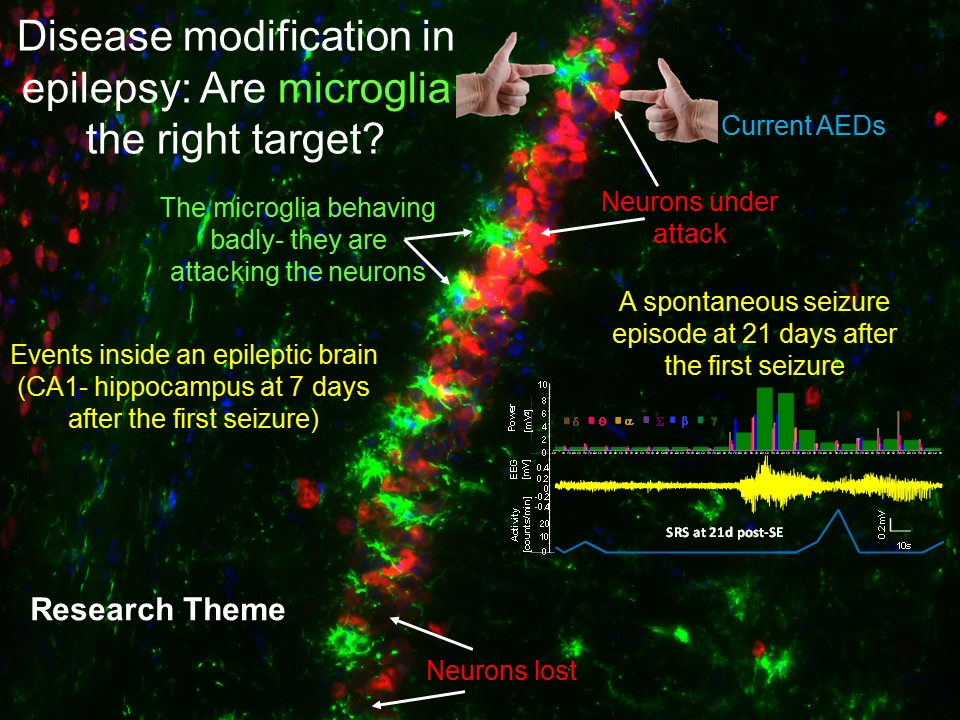Thimmasettappa Thippeswamy

- BVSc (DVM), Veterinary Science/Medicine, University of Agricultural Sciences, College of Veterinary Medicine, Bangalore, India
- MVSc, Veterinary Anatomy, University of Agricultural Sciences, College of Veterinary Medicine, Bangalore, India
- PhD, Neuroscience, University of Liverpool, England
- PgCert HE, Higher Education Teaching and Learning, University of Liverpool, England
- Present Course Director, BMS 330 (6 credits), Principles of Morphology I
Employment
- 2012-Present Professor, Department of Biomedical Sciences, College of Veterinary Medicine Iowa State University, Ames, Iowa, USA
- 2005-2012 Senior Lecturer, School of Veterinary Science, University of Liverpool, UK
- 1999-2005 Lecturer, Veterinary Preclinical Science, University of Liverpool, UK
- 1995-1999 PhD and Post-doctoral Research Fellow, Veterinary Preclinical Science, University of Liverpool, UK
- 1991-1995 Assistant Professor, University of Agricultural Sciences, Dept. of Vet. Anatomy and Histology, College of Vet. Sci., Bangalore, India
- 1991-1986 Lecturer/Clinical Instructor, University of Agricultural Sciences, Bangalore, India

My current research is focused on neuroinflammation and disease modification in epileptogenesis and epilepsy. Since 1995, my basic science research has been focused on identifying neurobiological changes in rodent models of nerve injury and epilepsy. The core theme of my research has been the role of glial-neuronal communication in neuroprotection mediated by the nitric oxide-cGMP pathway. I lead two major projects as PI; nerve injury induced chronic neurodegeneration project from 2000-2012 and disease modification in epilepsy from 2005 to-date. Our recent papers, published in the Neurobiology of Disease (2016, 18; 93:184-200) and Frontiers in Bioscience (Elite Ed), 2016, 8: 390-411), demonstrate our skills in a variety of techniques that were developed in my laboratory to address the core issues in epilepsy research. As a project leader, I trained undergraduate, graduate students and postdoctoral fellows. Through collaboration, I utilized viral vector transduction technology, in vitro and in vivo, to investigate neuroprotective pathways in glia (Glia, 49: 197-210, 2005) and neurons (J Neurochem. 100:790-801, 2007). I mentored 17 graduate students (9 as Major Professor, and 8 as Co-Major Professor) and 36 Undergraduate Student Projects during my time in Liverpool, England. After moving to Iowa State University, I mentored 12 undergraduate students. I am currently mentoring two undergraduate students, one from McNair program, two graduate students, and two more graduate (PhD) students on rotation, and a Fulbright MS student (2 MS students completed in last two years).
- The Commonwealth Fellowship was awarded for PhD- funded by the British Council, UK. (1995-1998)
- The Wellcome Trust Postdoctoral Fellowship, UK (1989-1999)
- The Royal Society (UK) Travel Fellowship (2005)
- Histology and Histopathology (Journal) (2006)
- Neural Regeneration Research (2009)
- Journal of Molecular Neuroscience (2010)
- Polish Veterinary Journal (2010)
- Journal of Histology (2012)
- Academic Editor, PLOS One (2015)
- Journal of Neuroscience Research (2016)
Professional Society Membership
- Indian Veterinary Council (1985)
- Karnataka Veterinary Association (Bangalore, India) (1985)
- British Neuroscience Association (1996)
- Federation of European Neuroscience Societies (2002)
- American Epilepsy Society (2013)
- American Society for Neuroscience (2013)
- American Society for Neurochemistry (2013)
- International Society for Neurochemistry (2013)
Peer Reviewer of Grant applications
- Medical Research Council, UK (2003)
- Biotechnology and Biological Sciences Research Council, UK (2004)
- The Wellcome Trust, UK (2004)
- Pain Relief Foundation, UK (2010)
- NSF-GRFP panel member- Neuroscience II (2014)
- ANIE- NIH study section (ad hoc) (2017)
External Examiner: (Professional courses and PhD)
- University of Edinburgh- PhD and MS thesis (2002-2004)
- University of Bristol- Veterinary Anatomy (2009-2013)
- University College Dublin- Veterinary Anatomy (2010-2013)
- The Hebrew University of Jerusalem (PhD) (2015-2016)
- Puttachary S, Sharma S, Verma S, Yang Y, Putra M, Thippeswamy A, Luo, D, Thippeswamy, T. (2016) 1400W, a highly selective inducible nitric oxide synthase inhibitor is a potential disease modifier in the rat kainate model of temporal lobe epilepsy, Neurobiology of Disease, May 18; 93:184-200. doi: 10.1016/j.nbd.2016.05.013. PMID: 27208748
- Puttachary S, Sharma S, Thippeswamy A, Thippeswamy T. (2016) Immediate epileptogenesis: Impact on brain in C57BL/6J mouse kainate model. Front Biosci (Elite Ed) Jun 1;8:390-411. PMID: 27100347.
- Puttachary S, Sharma SV, Tse K, Beamer E, Sexton AM, Crutison JB, Thippeswamy T (2015) Immediate epileptogenesis after kainate-induced status epilepticus in C57BL/6J mice: Evidence from long term continuous video-EEG telemetry. PLoS ONE 10(7): e0131705. doi:10.1371/journal.pone.0131705
- Puttachary S, Sharma S, Stark S, Thippeswamy T. (2015) Seizure-Induced Oxidative Stress in Temporal Lobe Epilepsy, Biomed Res Int. 2015:745613. Epub 2015 Jan 20.
- Tse K, Puttachary S, Beamer E, Sills GJ, Thippeswamy T. (2014) Advantages of repeated low dose against single high dose of kainate in C57BL/6J mouse model of status epilepticus: Behavioral and electroencephalographic studies. PLoS ONE 9(5): e96622. doi:10.1371/ journal.pone.0096622.
- Beamer E, Othal J, Sills GJ, Thippeswamy T. (2012) Nw-propyl-L-arginine (L-NPA) reduces status epilepticus and early epileptogenic events in a mouse model of epilepsy: behavioural, EEG and immunohistochemical analyses. European J. Neuroscience, 36: 3194-3203.
- Bradman MJ, Morris R, McArdle A, Jackson MJ, Thippeswamy T. (2012) The effects of L-NAME on neuronal NOS and SOD1 expression in the DRG-spinal cord network of axotomised Thy 1.2 eGFP mice. Neuron Glia Biology, 7 (2-4):129-141
- Haddley K, Spencer EM, Vasiliou SA, Howard M, Thippeswamy T, Bubb VJ, Quinn JP. (2011) Lithium chloride regulation of the substance p encoding preprotachykinin a, tac1 gene in rat hippocampal primary cells. J Mol Neurosci. 45(2): 94-100.
- Bradman MJ, Arora DK, Morris R, Thippeswamy T. (2010) How do the satellite glia cells of the dorsal root ganglia respond to stressed neurons?--nitric oxide saga from embryonic development to axonal injury in adulthood. Neuron Glia Biol. 6(1):11-7.
- Cosgrave AS, McKay JS, Thippeswamy T. (2010) Differential regulation of vasoactive intestinal peptide (VIP) in the dentate gyrus and hippocampus via the NO-cGMP pathway following kainic acid-induced seizure in the rat. J Mol Neurosci. 42(3):359-69.
- Cosgrave AS, McKay JS, Morris R, Quinn JP, Thippeswamy T. (2010) The effects of nitric oxide inhibition prior to kainic acid treatment on neuro- and gliogenesis in the rat dentate gyrus in vivo and in vitro. Histol Histopathol. 25(7):841-56.
- Cosgrave AS, McKay JS, Morris R, Quinn JP, Thippeswamy T. (2009) Nitric oxide regulates activity-dependent neuroprotective protein (ADNP) in the dentate gyrus of the rodent model of kainic acid-induced seizure. J Mol Neurosci. 39(1-2): 9-21.
- McKay JS, Cosgrave AS, Thippeswamy T. (2009) The Roles of Nitric Oxide in Neurophysiology and Neuropathology In: Perspectives on NO in Physiology and Pathology. p 89-121. Editors: Vernon J. Richardson and Alan V. Wallace. ISBN: 978-81-7895-414-1 Note: The image on the front cover of this book is from Thippeswamy’s lab.
- Cosgrave AS, McKay JS, Bubb V, Morris R, Quinn JP, Thippeswamy T. (2008) Regulation of activity-dependent neuroprotective protein (ADNP) by the NO-cGMP pathway in the hippocampus during kainic acid-induced seizure. Neurobiol Dis. 30(3):281-92.
- Arora DK, Cosgrave AS, Howard MR, Bubb V, Quinn JP, Thippeswamy T. (2007) Evidence of postnatal neurogenesis in dorsal root ganglion: role of nitric oxide and neuronal restrictive silencer transcription factor. J Mol Neurosci. 32(2): 97-107.
- Thippeswamy T, Howard MR, Cosgrave AS, Arora DK, McKay JS, Quinn JP. (2007) Nitric oxide-NGF mediated PPTA/SP, ADNP, and VIP expression in the peripheral nervous system. J Mol Neurosci. 33(3):268-77.
- Thippeswamy T, Haddley K, Corness JD, Howard MR, McKay JS, Beaucourt SM, Pope MD, Murphy D, Morris R, Hökfelt T, Quinn JP. (2007) NO-cGMP mediated galanin expression in NGF-deprived or axotomized sensory neurons. J Neurochem. 100:790-801.
- Thippeswamy T, McKay JS, Quinn JP, Morris R.(2006) Nitric Oxide, A biological Double-Faced Janus- Is this Good or Bad? Histology and Histopathology, 21: 445-458. Review.
- Howard MR, Hadley K, Thippeswamy T, Vasiliou S, Quinn JP. (2006) ‘Substance P and the Tachykinins’ in Handbook of Neurochemistry and Molecular Neurobiology, 3rd Edition: Neuroactive Proteins and Peptides. Editors: Lajtha A. and Lim R., Spinger-Verlag Berlin, Heidelberg, Germany, pp 427-461.
- Gerard L, Hadley K, Howard M, Paterson T, Thippeswamy T, Quinn JP (2005) Recombinant AAV transfection of cultured rat dorsal root ganglion neurons reveals the role of NGF in alleviating E box-mediated repression of the rat Preprotachykinin-A gene promoter. Neuropeptides, 39: 475-83.
- Thippeswamy T, McKay JS, Morris R, Quinn JP. Wong L-F, Murphy D. (2005) Glial-Mediated Neuroprotection: Evidence for the Protective role of NO-cGMP Pathway via Neuron-Glial Communication in the Peripheral Nervous System. Glia, 49: 197-210.
- Thippeswamy T, McKay JS. (2005) Neuronal nitric oxide synthase and nerve growth factor expression in the enteric nervous system. Cell Mol Biol. 51: 293-298.
- Thippeswamy T, McKay JS, Morris R. (2005) Either Nitric Oxide or Nerve Growth Factor is required for dorsal root ganglion neurons to survive during embryonic and neonatal development. Brain Res Dev Brain Res., 154 (2): 153-164.
- Thippeswamy T, Morris R. (2002) Nitric Oxide: Novel Actions, Deleterious Effects and Clinical Potentials- the roles of nitric oxide in dorsal root ganglion neurons. Ann. N. Y. Acad. Sci. 962: 103-110. Review
- Nazu M, Thippeswamy T. (2002) Nitric oxide signaling system in rat brain stem: immunocytochemical studies. Anat Histol Embryol., 31(4): 252-6.
- Thippeswamy T, McKay JS, Morris R. (2001) Bax and caspases are inhibited by endogenous nitric oxide in dorsal root ganglion neurons in vitro. Eur. J. Neurosci., 14(8): 1229-1236.
- Thippeswamy T, Morris R. (2001) Nitric Oxide versus Nerve Growth Factor: Who matters and When? Studies from dorsal root ganglia. Curr Opin Clin Exp Res. 3:196-216.
- Thippeswamy T, Nazli M, Jain RK, Morris R. (2001) Inhibition of neuronal nitric oxide synthase results in neurodegenerative changes in the axotomised dorsal root ganglion neurons: Evidence for a neuroprotective role of NO in vivo. Neurosci. Res. 40: 37-44.
- Thippeswamy T, Morris R. (2001) Evidence that nitric oxide induced synthesis of cGMP occurs in a paracrine but not autocrine fashion and that the site of its release can be regulated: Studies in dorsal root ganglia in vivo and in vitro. Nitric Oxide: Biology and Chemistry. 5 (2): 105-115
- Nazli M, Hismiogullari ES, Thippeswamy T, Morris R. (2001) How central is nitric oxide to the activation of c-fos in spinal neurones following noxious peripheral stimulation in the rat? Brain Res., 888(1): 172-175.
- Thippeswamy T, Morris R. (1997) Nerve growth factor inhibits expression of neuronal nitric oxide synthase in dissociated cultures of dorsal root ganglia. Neurosci. Lett., 230: 9-12.
- Thippeswamy T, Morris R. (1997) Cyclic guanosine 3,5-monophosphate (cGMP) mediated neuroprotection by nitric oxide in dissociated cultures of rat dorsal root ganglion neurons. Brain Res., 774: 116-122.
